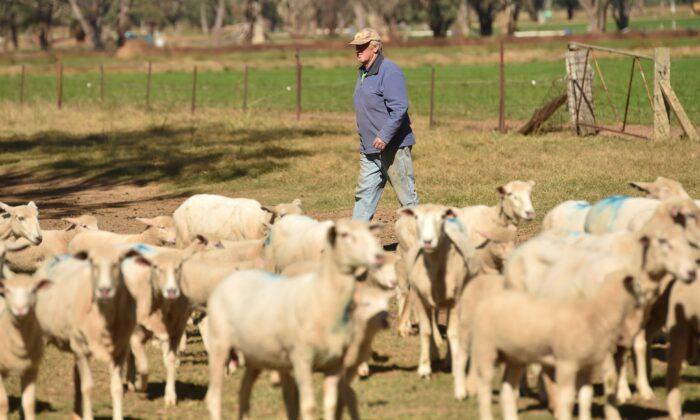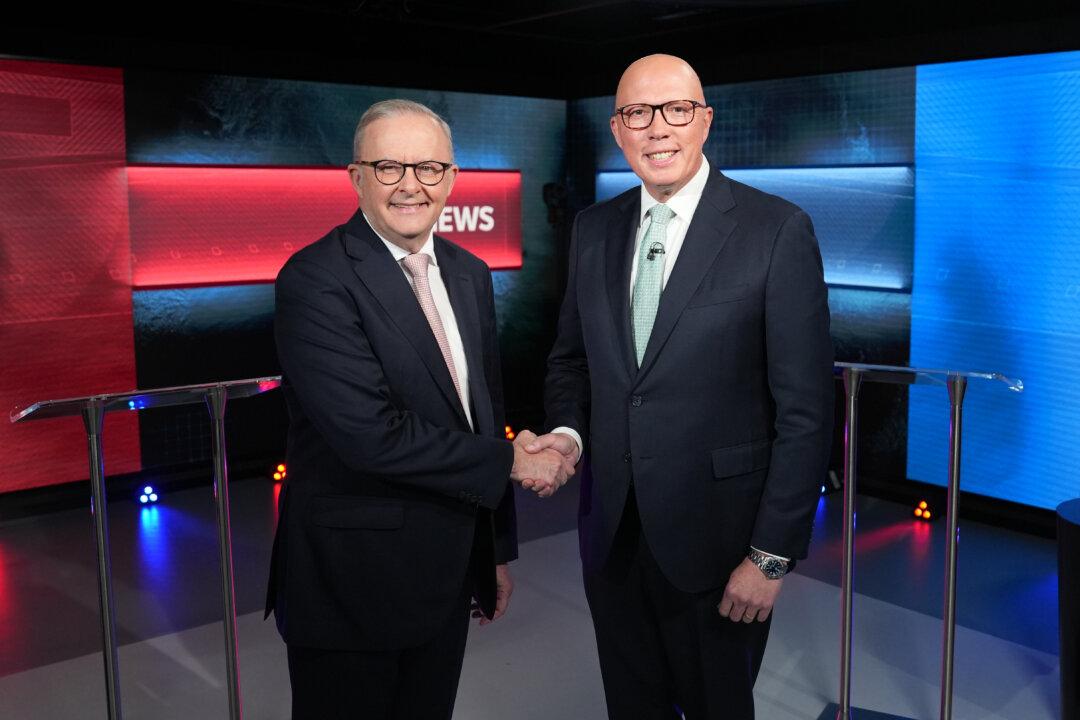Walking down a flooded road in Forbes, in central west New South Wales (NSW), Prime Minister Anthony Albanese smiled as Nationals MP Michael McCormack put an arm around his shoulder.
During visits to disaster zones in NSW, Victoria and Tasmania this week, the prime minister greeted local emergency service crews, gumboot-clad locals, and a sheepdog named Linnie.
But not everything is cosy between the government, the National Party and rural Australians, as regional funding has become a battleground ahead of Labor’s first budget.
For weeks, senior Nationals have warned rural programs will be on the government’s chopping block when it hands down the federal budget on Tuesday night.
Nationals leader David Littleproud and Senator Bridget McKenzie both warned the government would “rip the guts out” of regions, claiming it would cut spending to fund its $2.2 billion transport announcement for Labor-led Victoria.
Regional Development Minister Catherine King said the budget was cracking down on any coalition “rorts and waste.”
“There will be plenty of regional funding in this budget,” King said this week.
Dominic O'Sullivan, professor of political science from Charles Sturt University, said the government’s audit was partly of The Nationals’ making after former leader Barnaby Joyce made a deal on net zero emissions targets in exchange for regional spending.
“The government has said this will be a difficult budget. There are high levels of debt and spending commitments it took to the election,” O'Sullivan told AAP.
“The money is not coming from increased tax. One of the target areas is clearly the deal Barnaby Joyce did with the Liberals.”
The government said no particular coalition program was being targeted as it made funding announcements across critical areas of rural health and connectivity.
Doctors said the government’s announcement to restore bulk billed video telehealth psychiatry consultations in a $47.7 million (US$37.1 million) spending would improve the desperate state of country mental health services.
The Rural Doctors Association expects to see a $146 million workforce spend, honouring a coalition election promise that would give country generalists a pay rise.
“It will be a landmark change that creates a pull factor for doctors,” the association’s Dr. John Hall said.
But Hall said Labor revealed its misunderstanding of rural needs when it gave workforce priority status to metropolitan suburbs in July, funnelling doctors from the bush.
“It was bowing to pressure to solve doctor shortages in metropolitan areas, really robbing Peter to pay Paul,” Hall said.
“We are watching this space really closely.”
As peak regional organisations renewed a push for better connectivity to support health and local economies, Labor committed $2.4 billion for NBN upgrades for 1.5 million homes, including full-fibre access to 700,000 regional properties.
Kristy Sparrow, from the influential volunteer group Better Internet for Rural, Regional and Remote Australia, said people in the bush needed more help navigating complex connectivity options.
“You could be living in Wagga Wagga, or you could be living in Woorabinda, you could be 18 or 73 and equally as likely to not know how to get connected,” Sparrow said.
At the core of many issues in the bush, including skills shortages, is a severe lack of housing.
Grassroots campaign group Everybody’s Home, which represents hundreds of community service groups, wants the government to commit to building at least 25,000 affordable and social homes per year.
It said there was one house for every 10 jobs in some regions, compared to one house for every five jobs in Sydney.
O'Sullivan said housing, skills shortages, and health all require long-term planning.
“The government will want to be seen to be doing something so that when they go to places like Dubbo or Wagga, or further afield, they can say, ‘We’ve got a plan for your GP clinic and a plan for when your kids leave school.’
“Those things are really important.”





